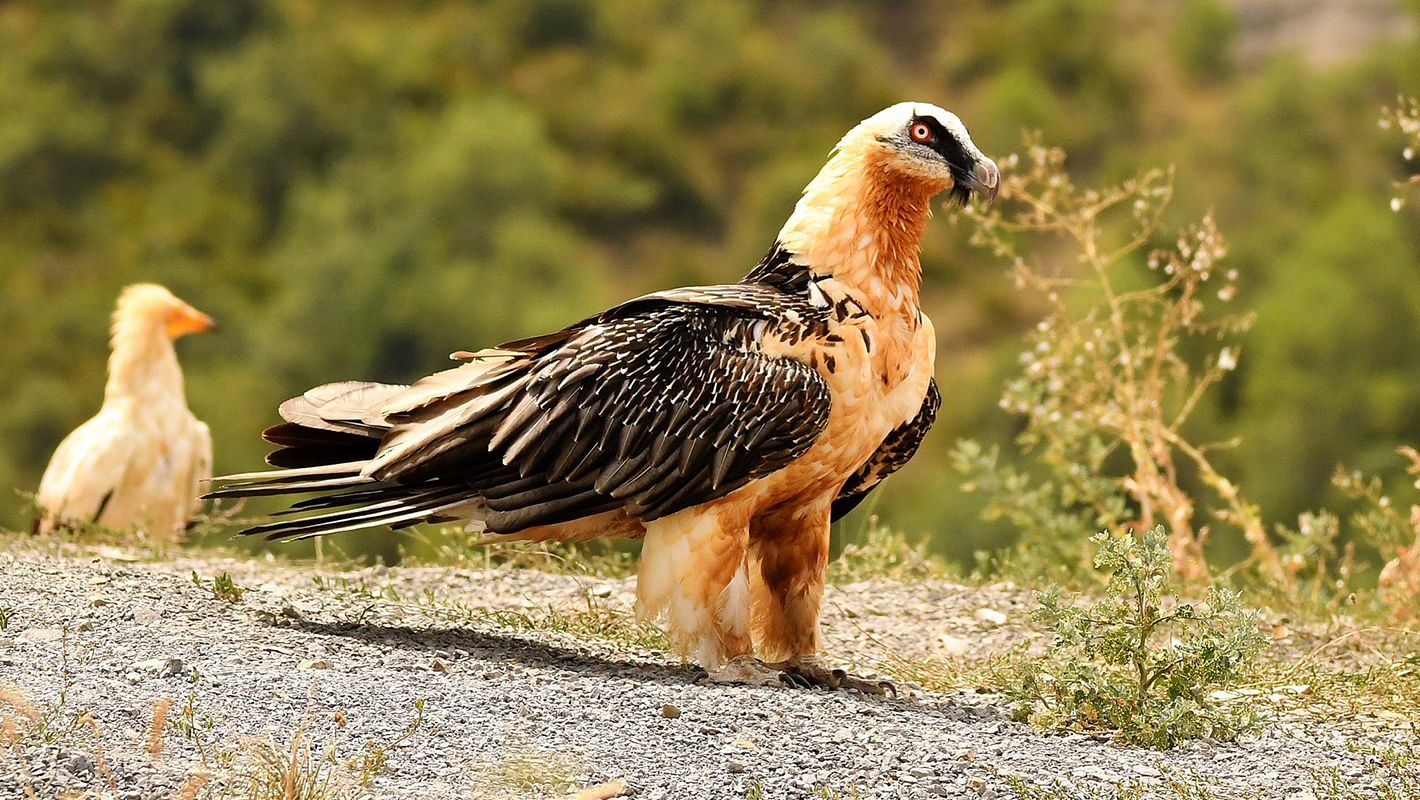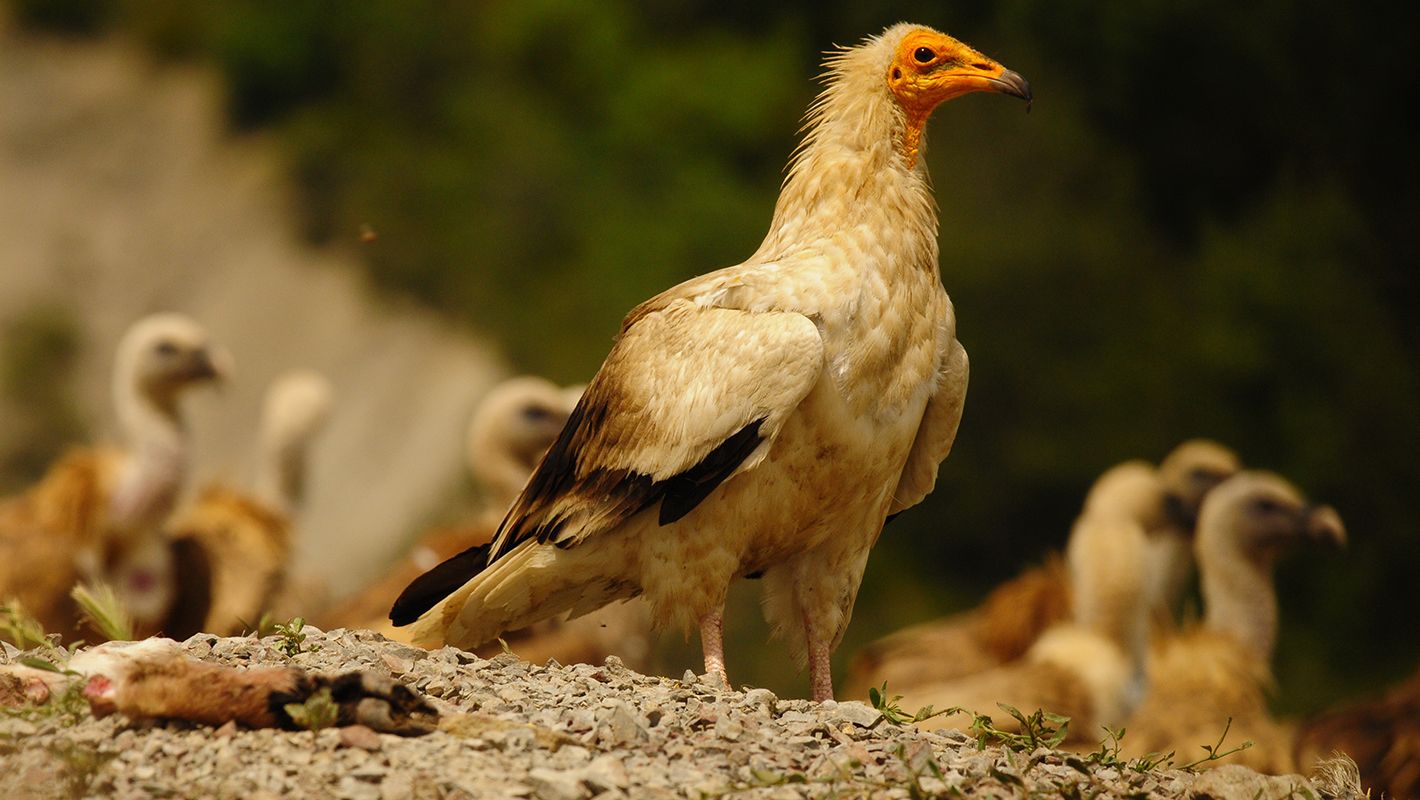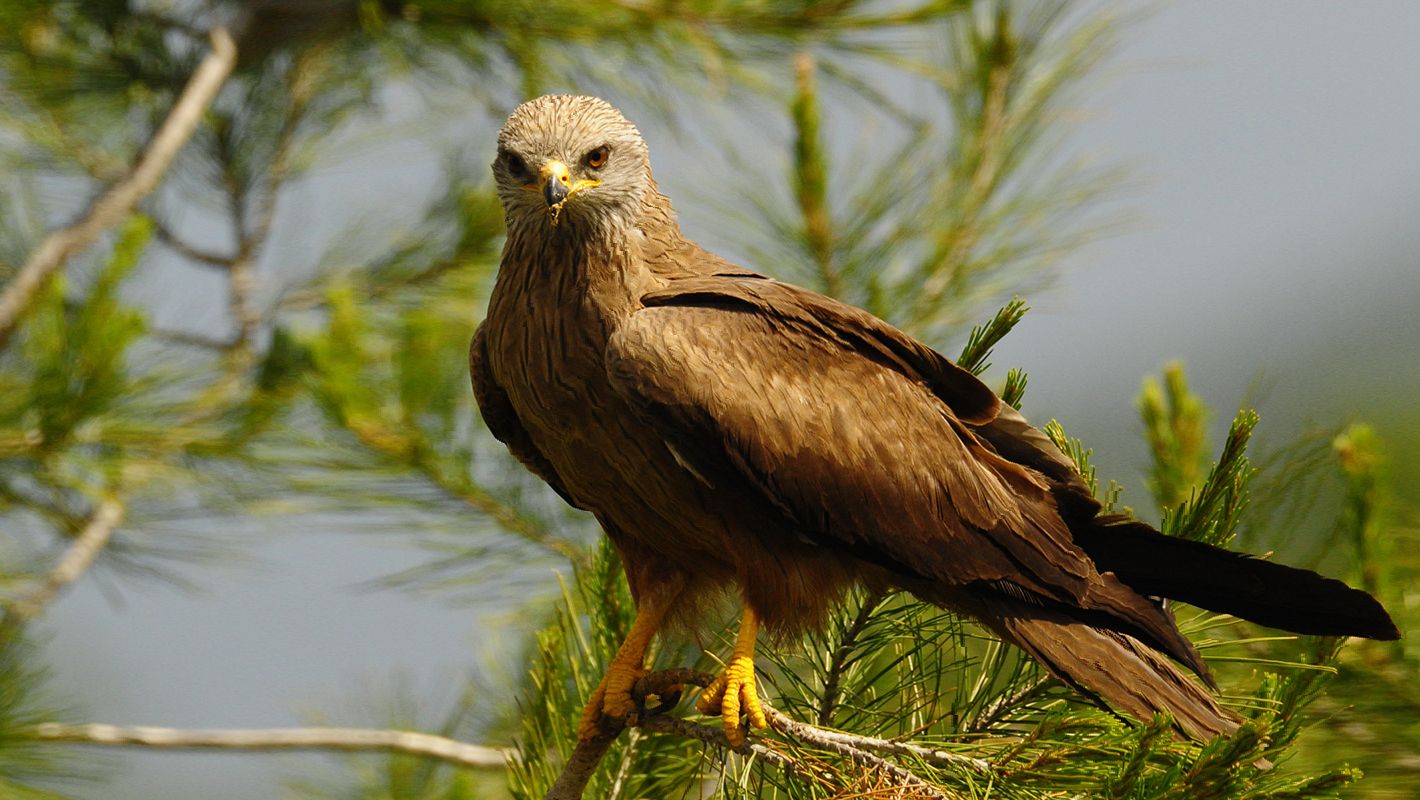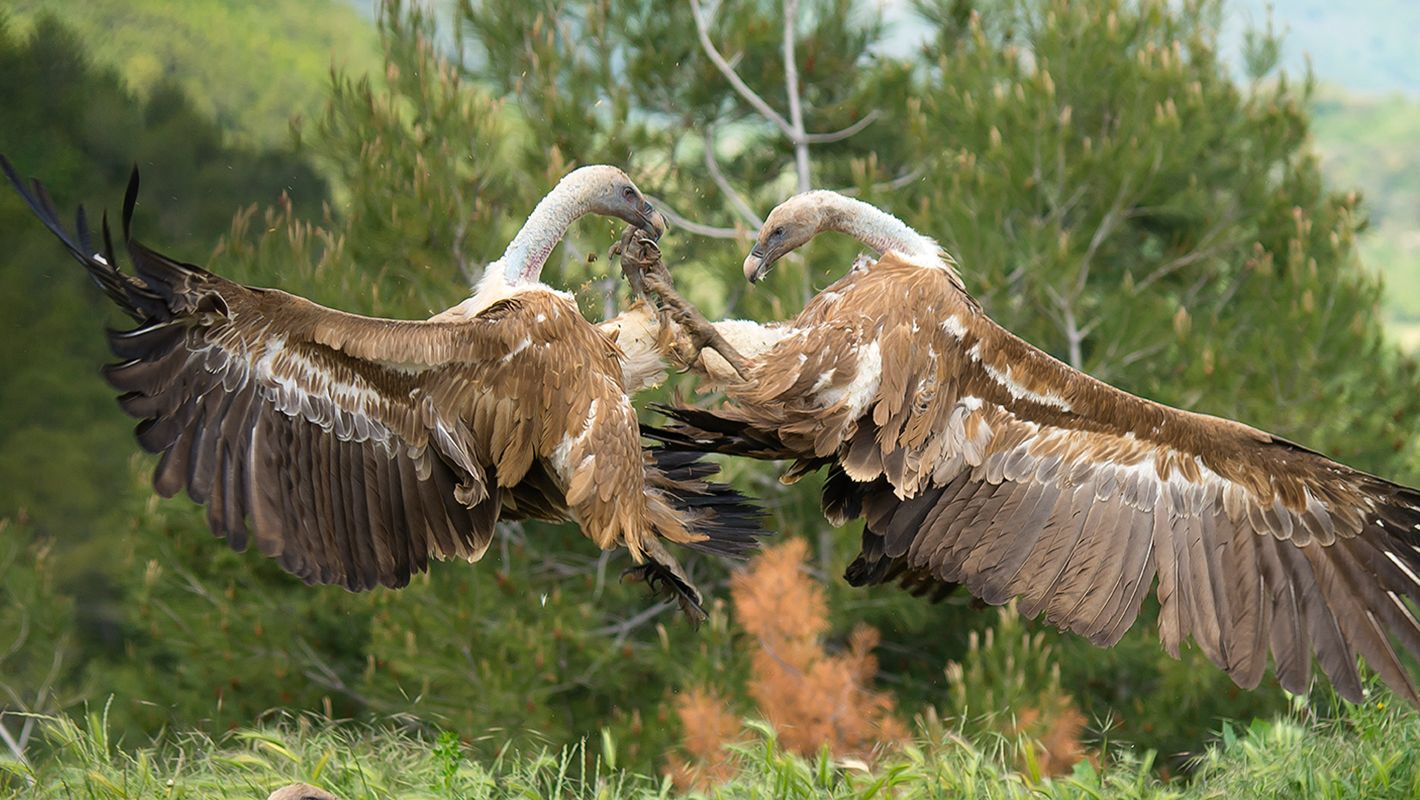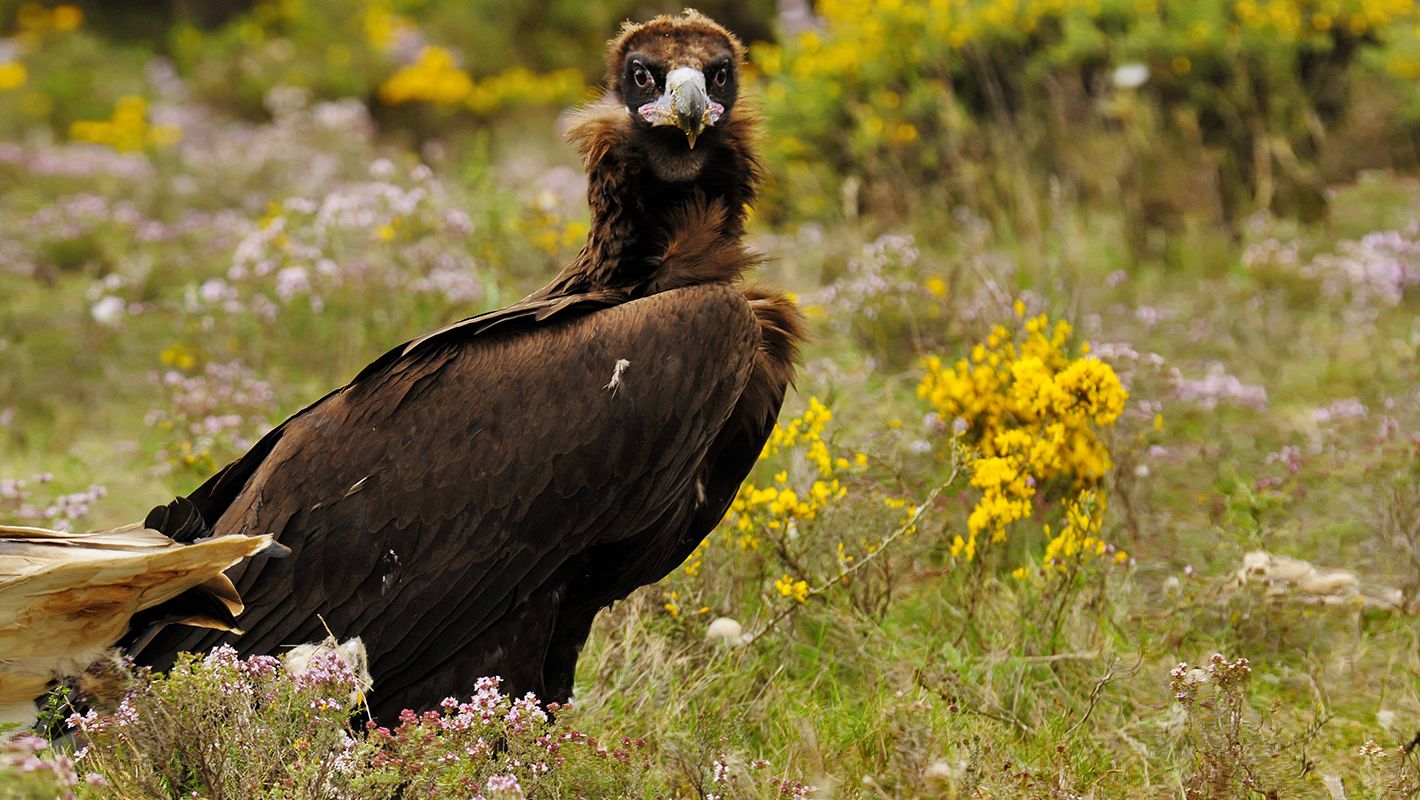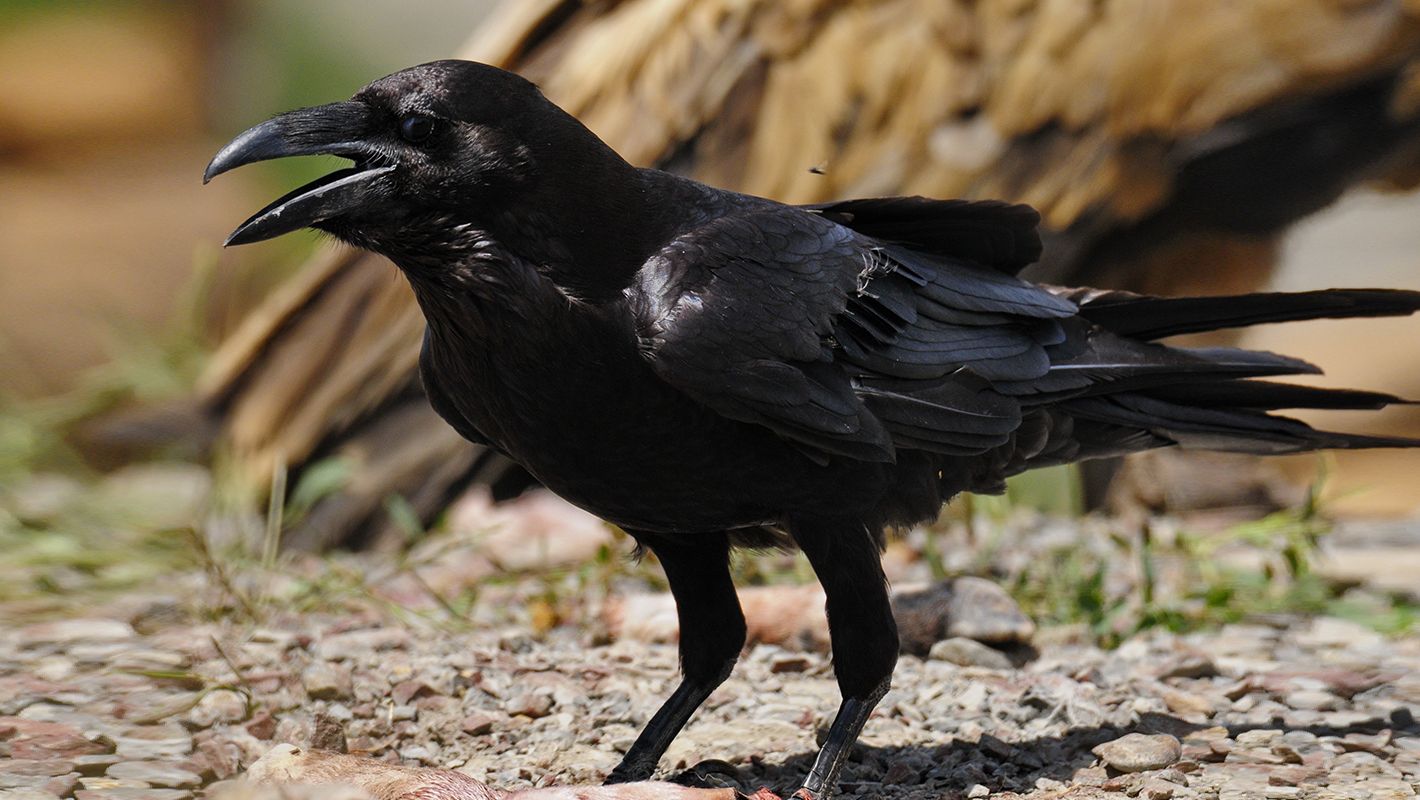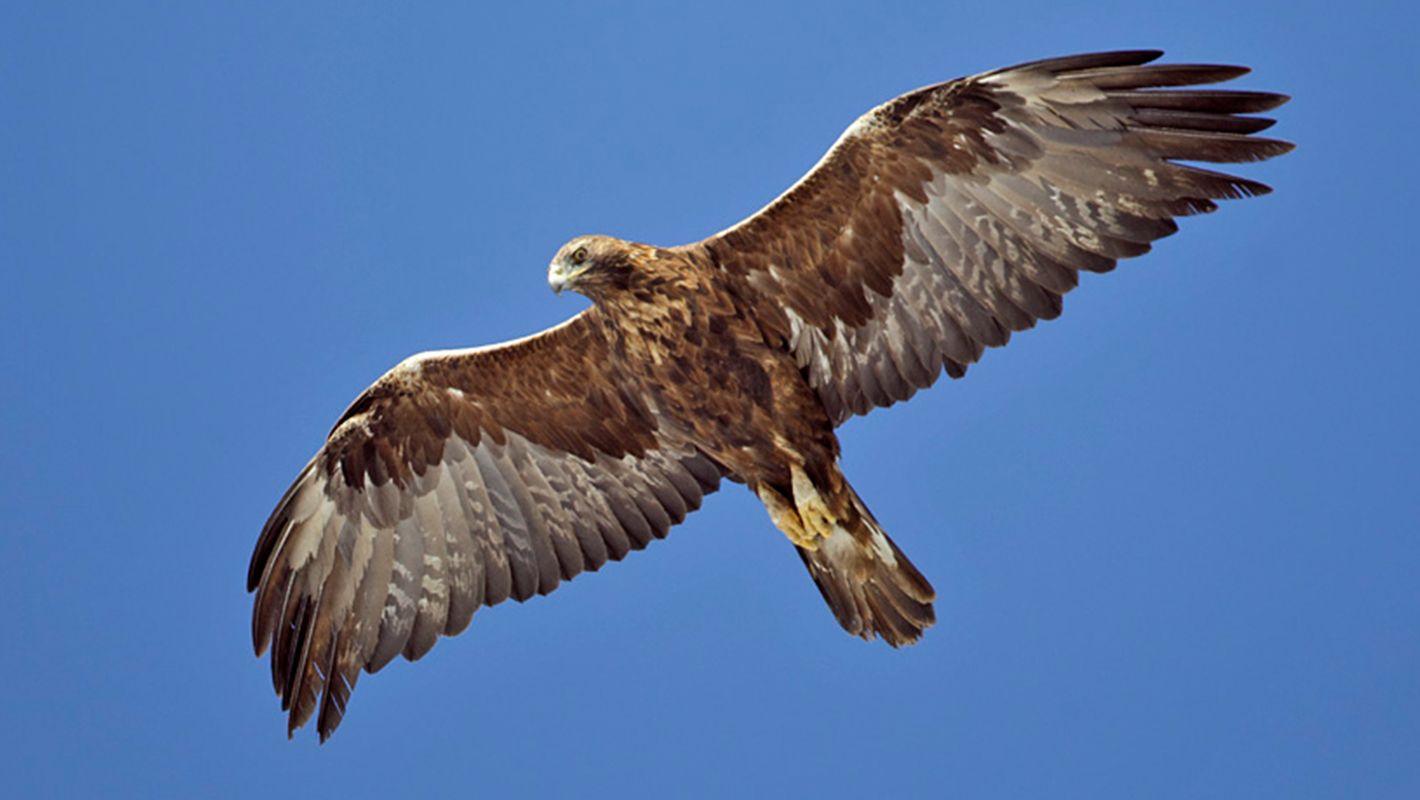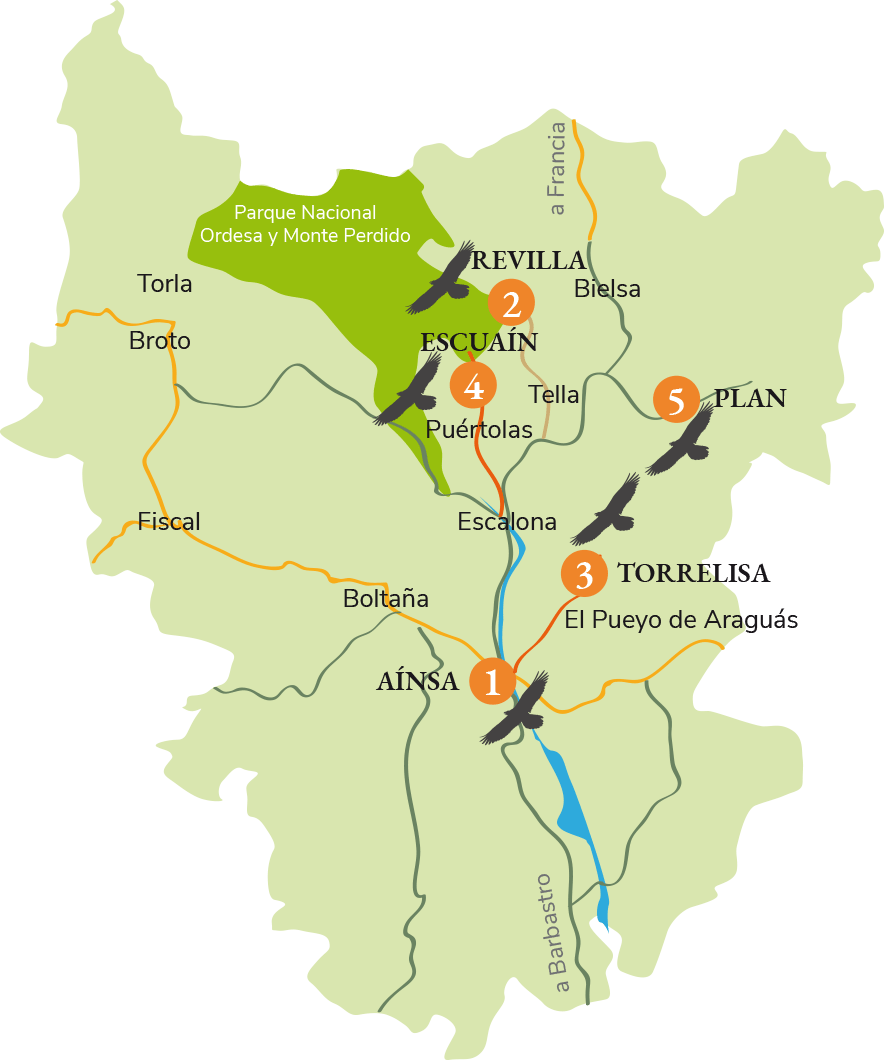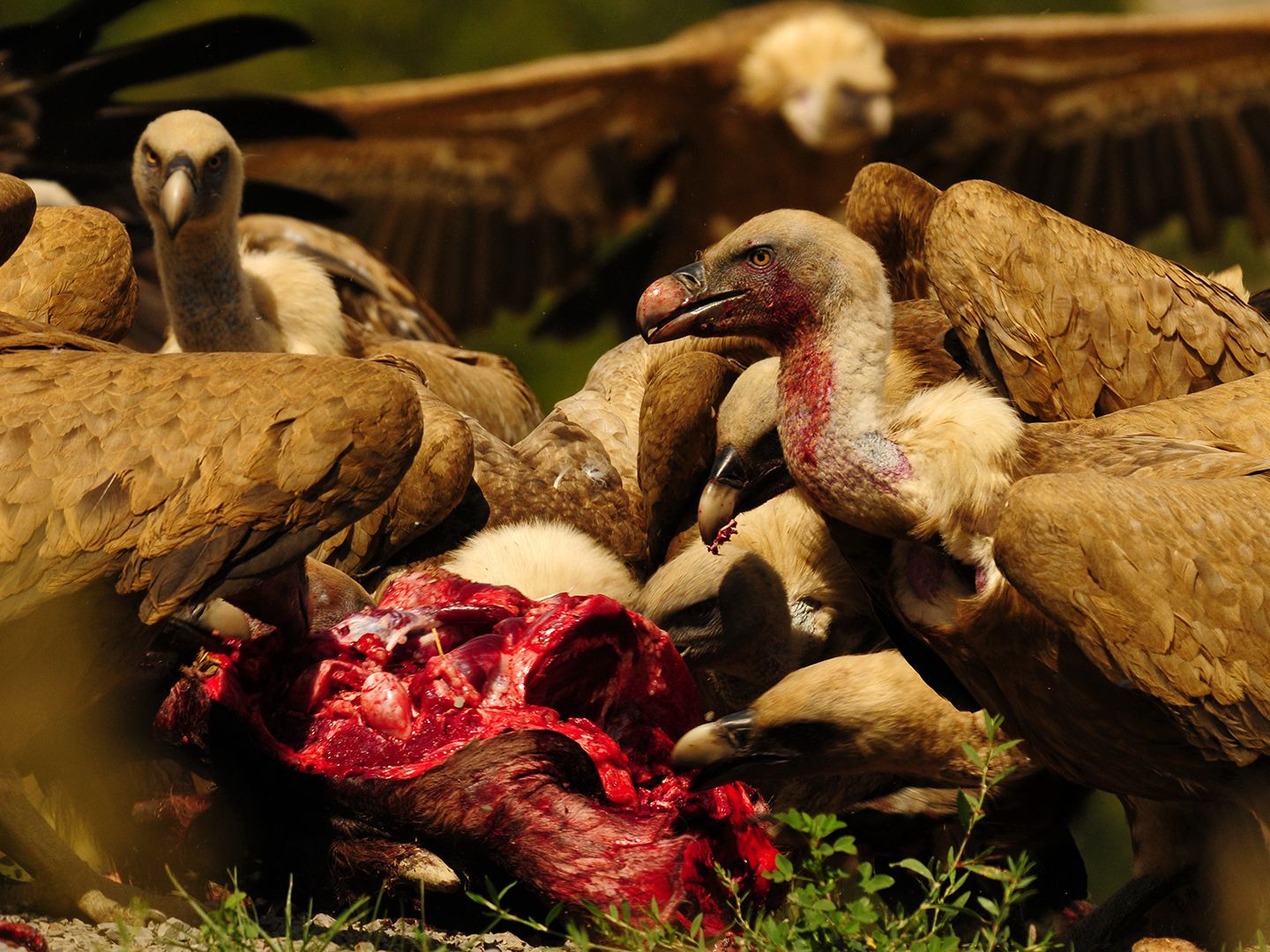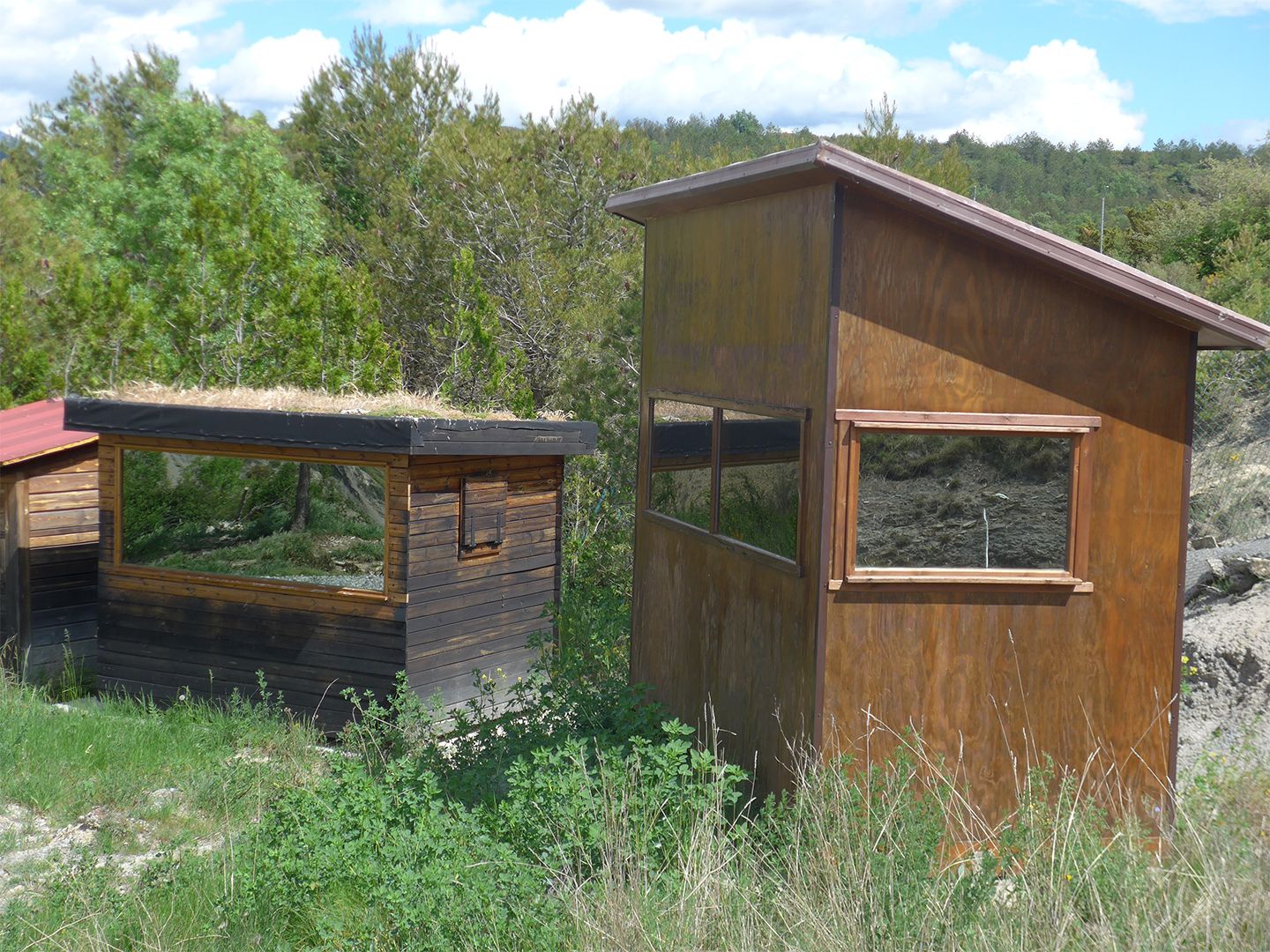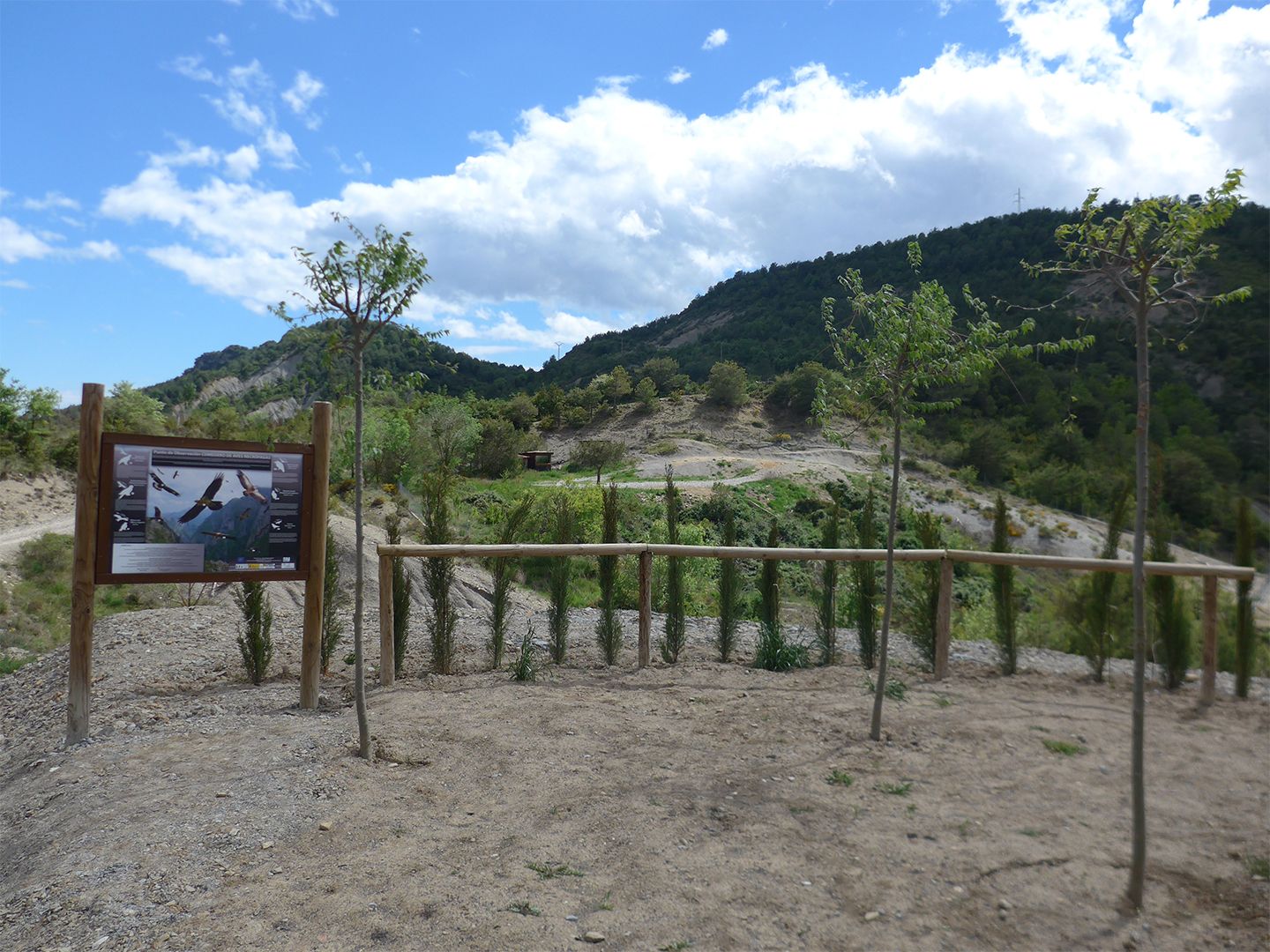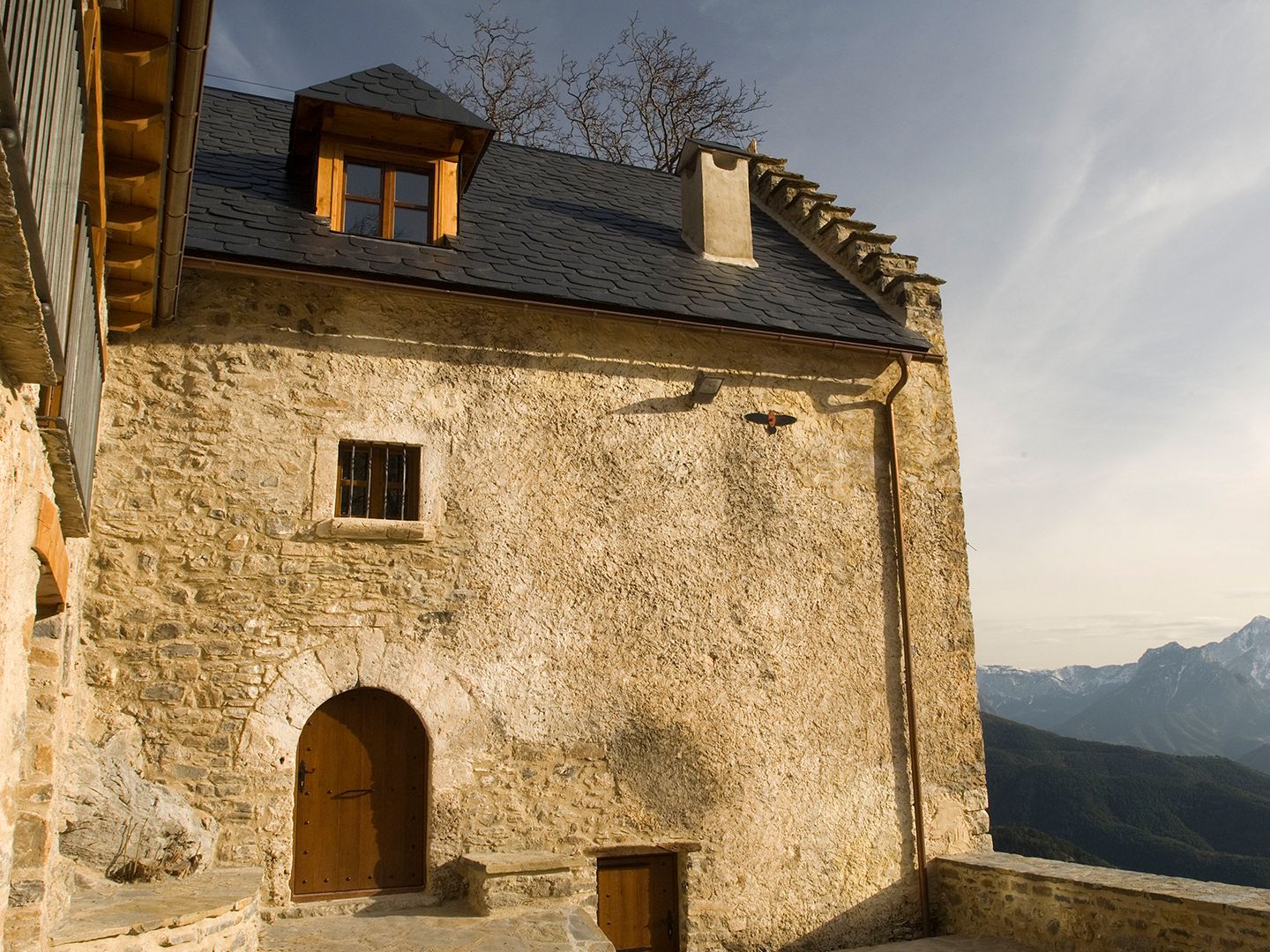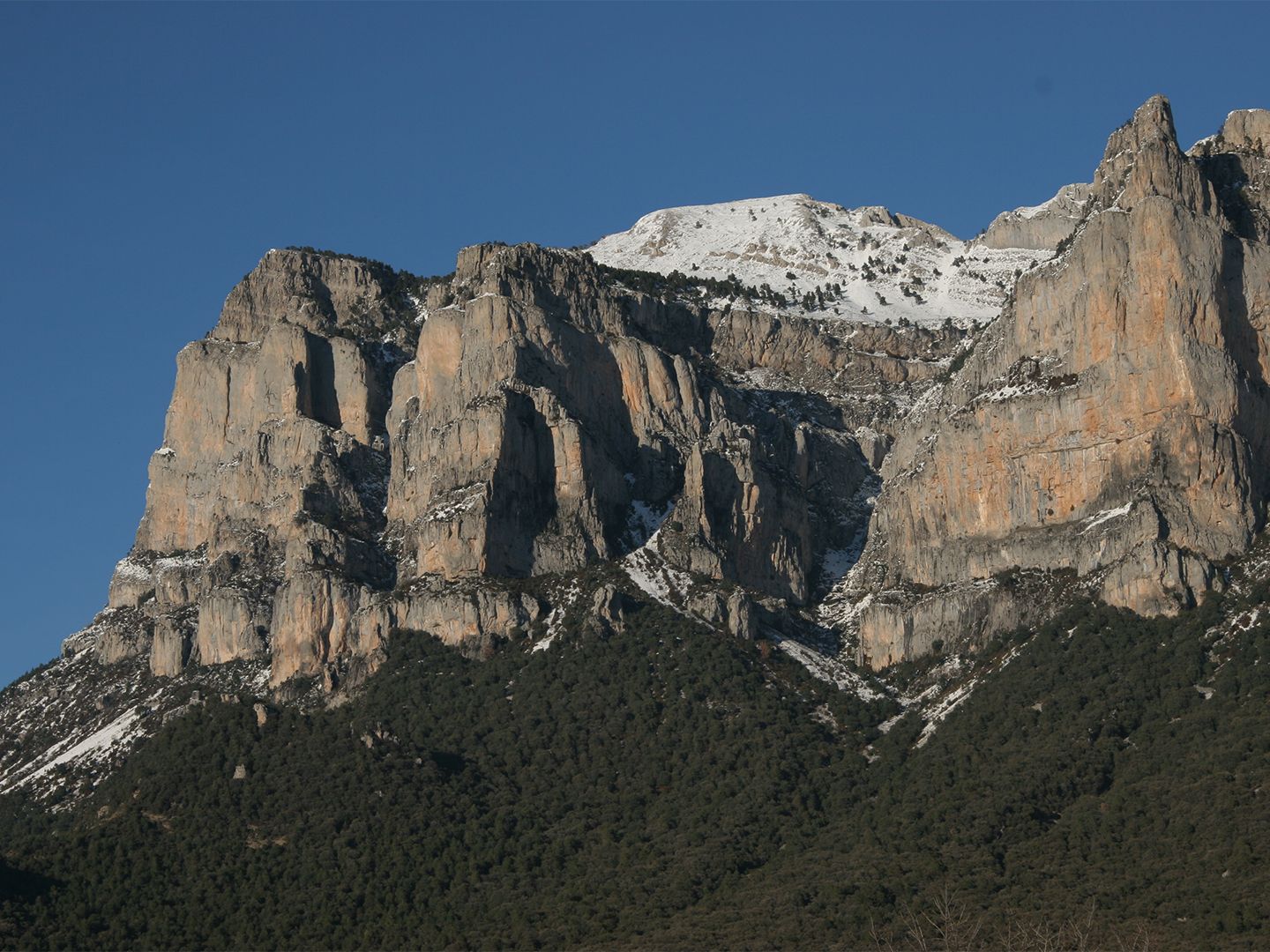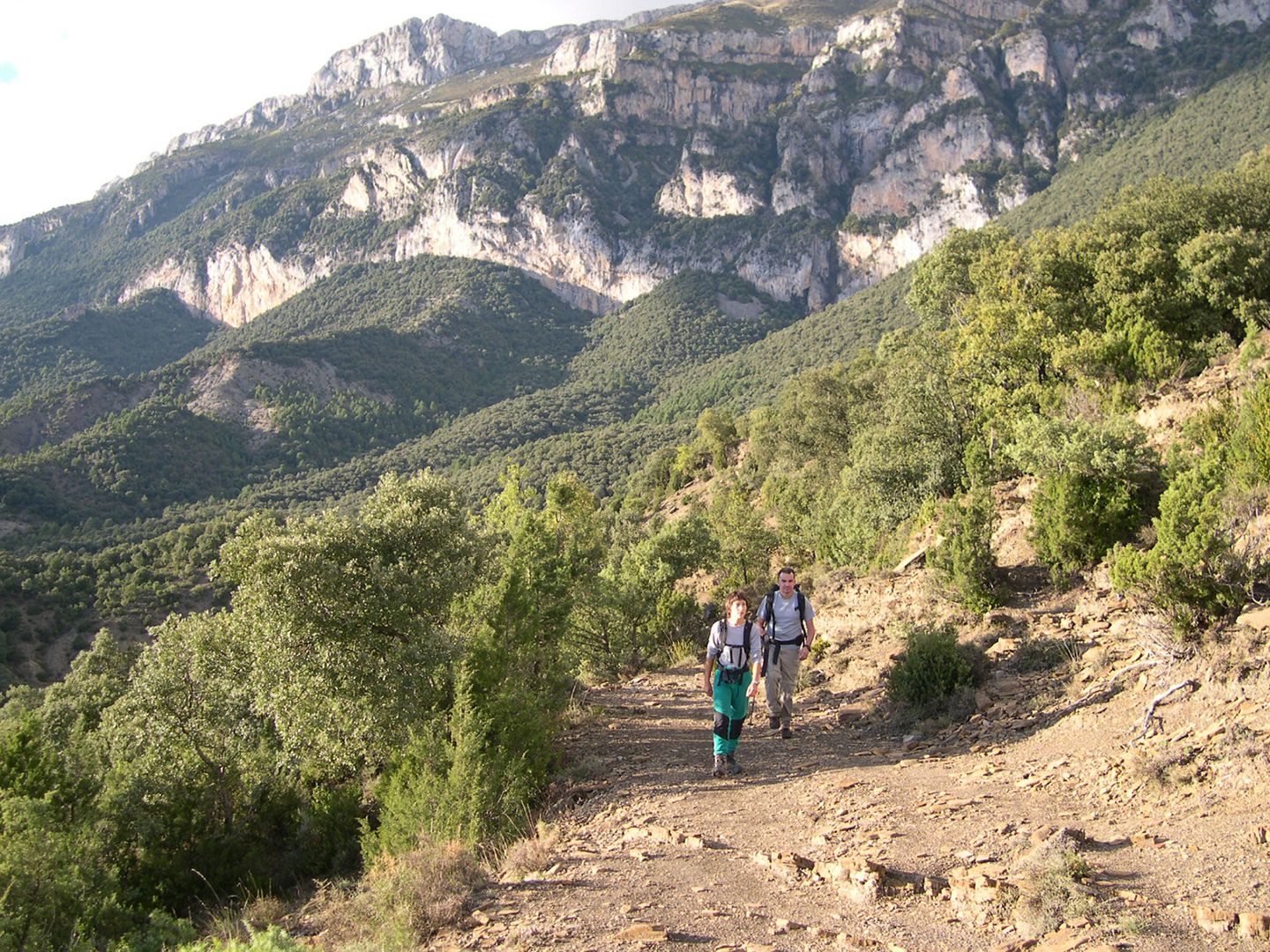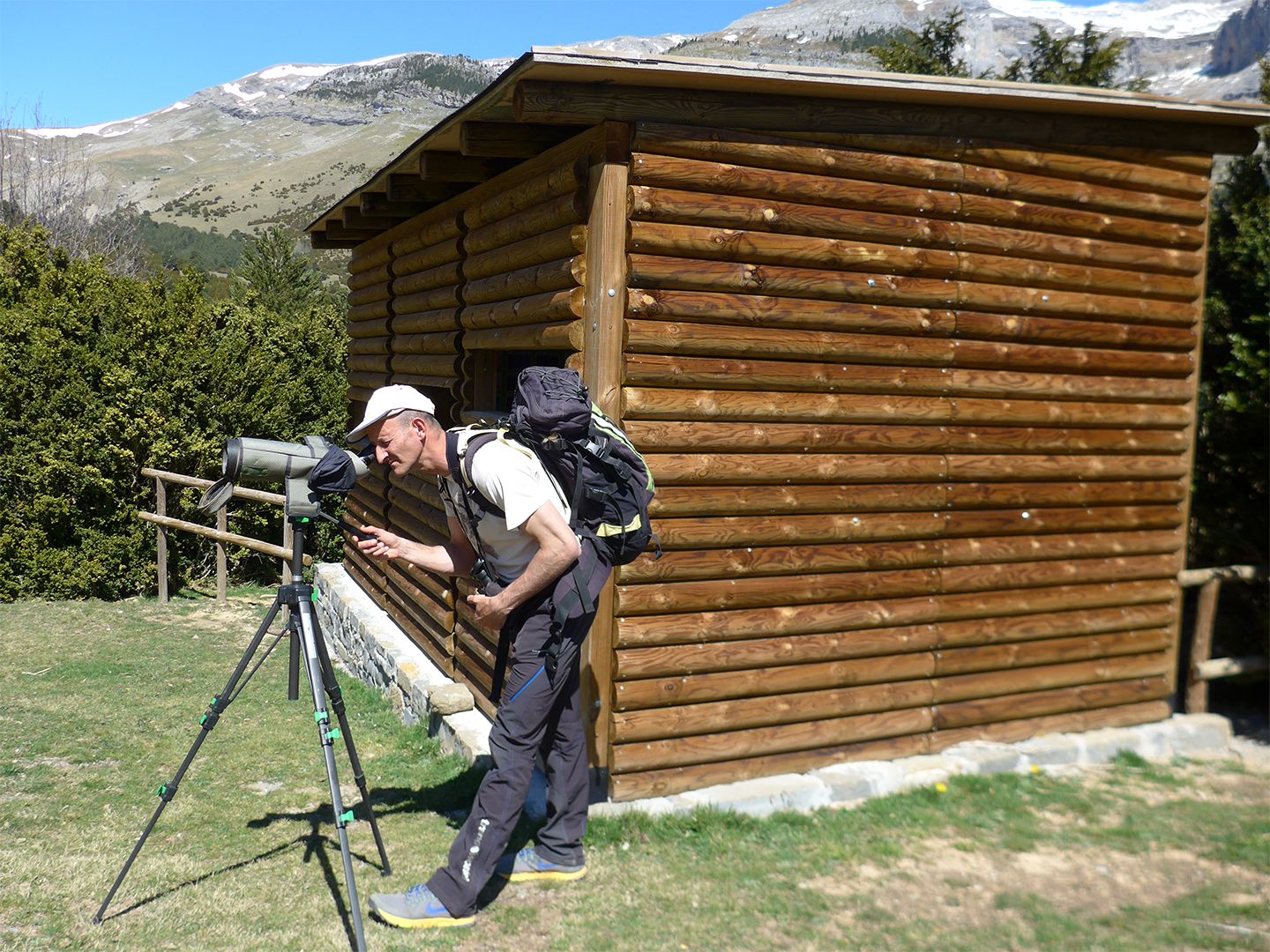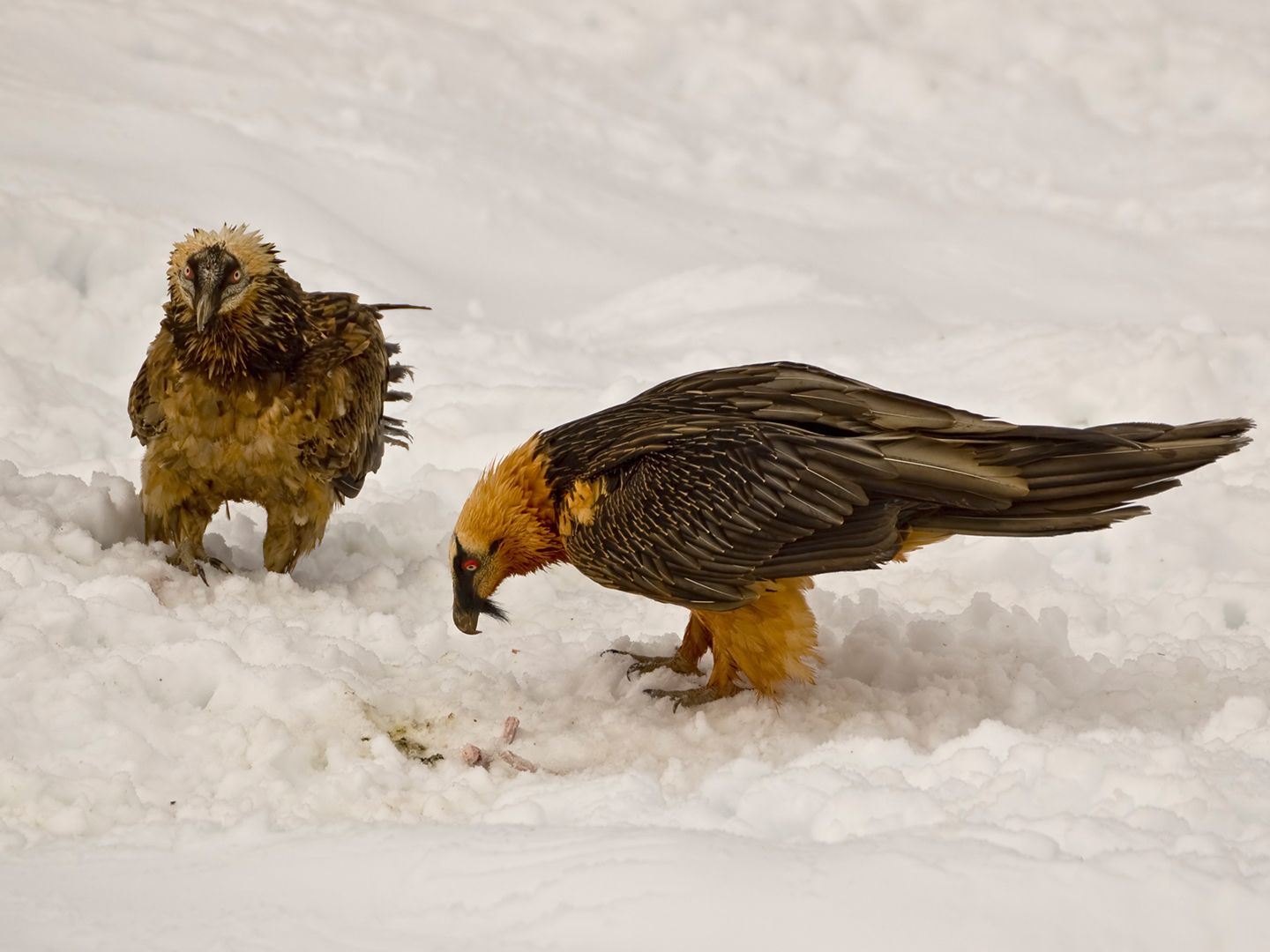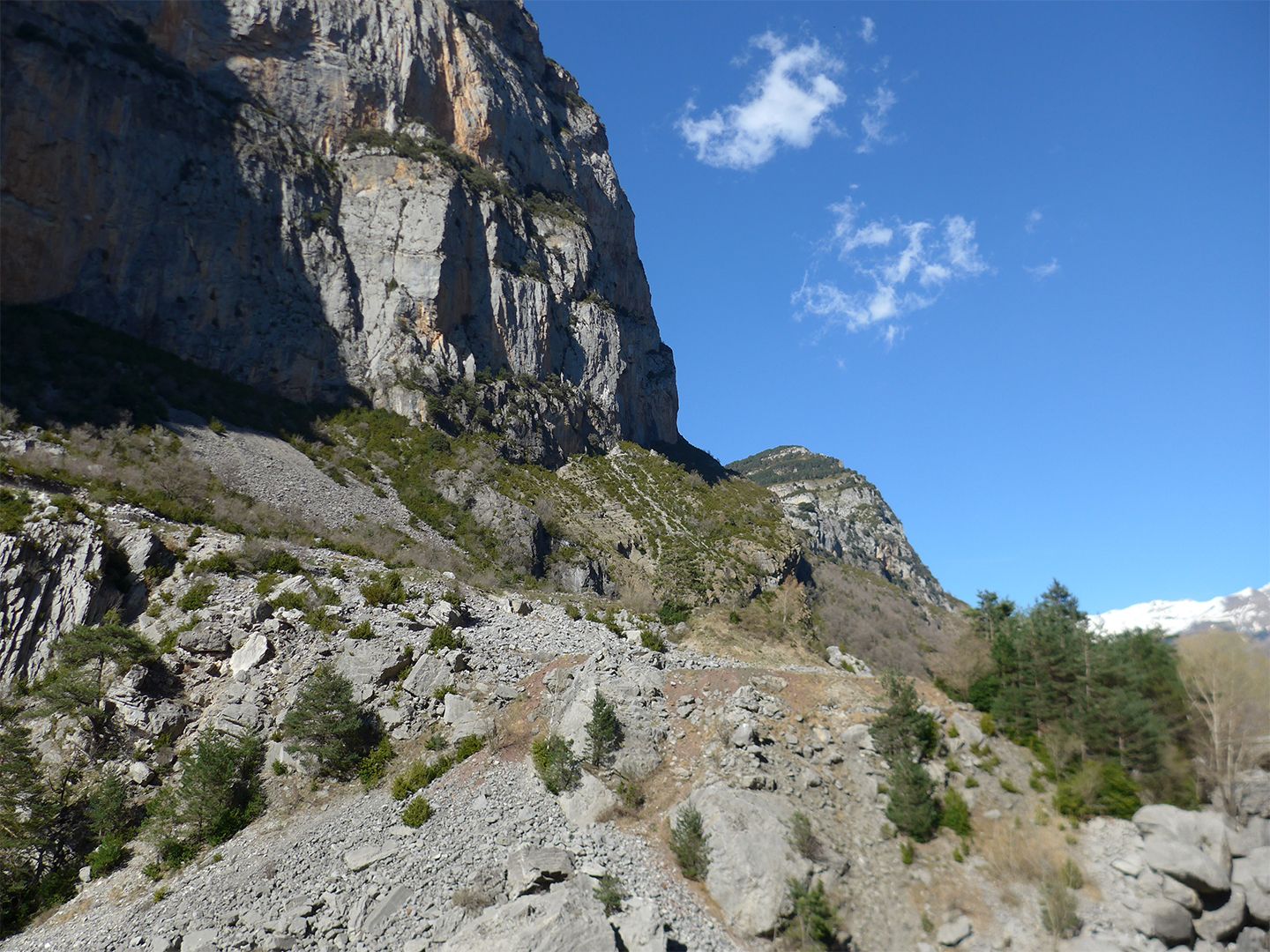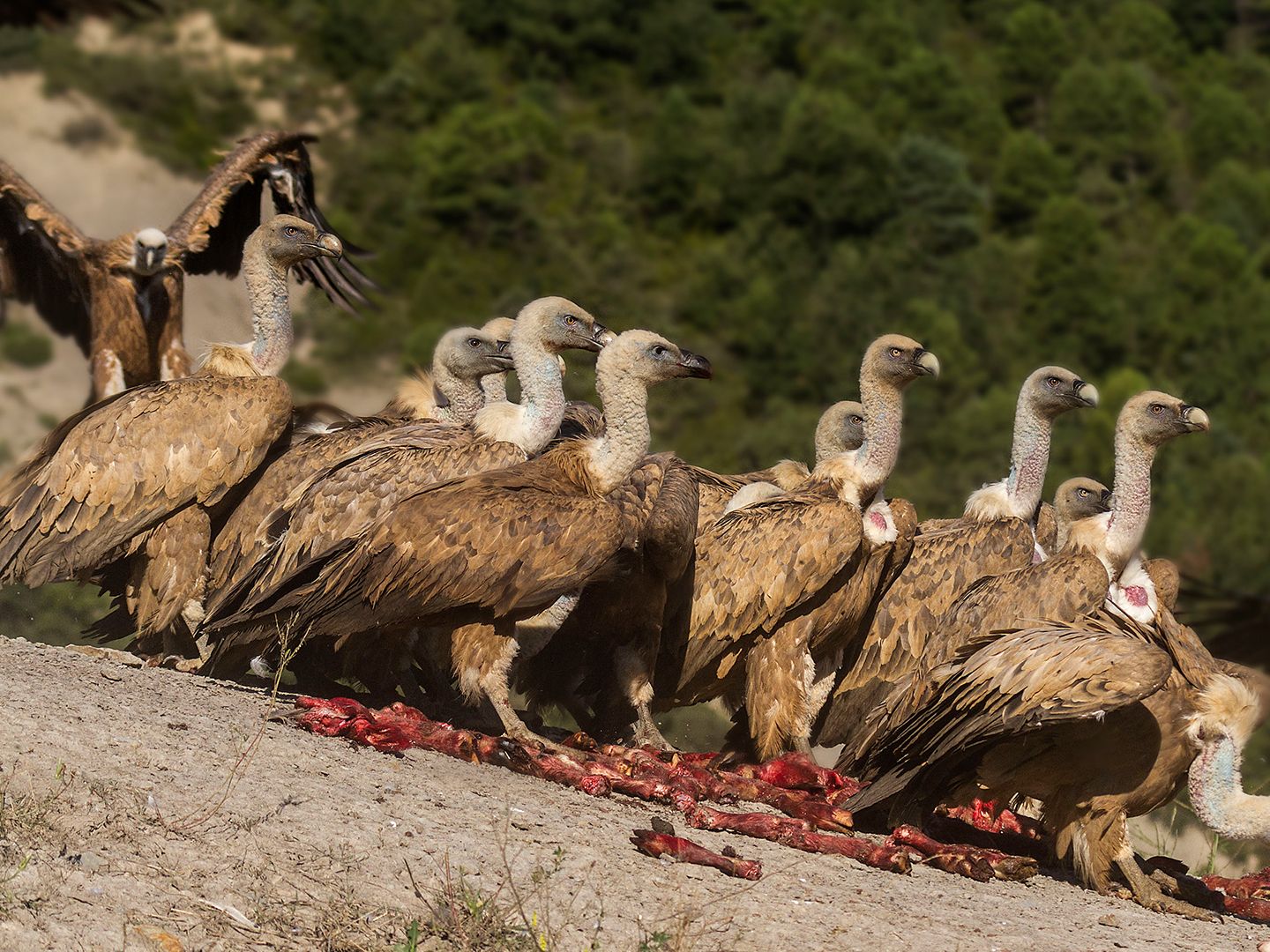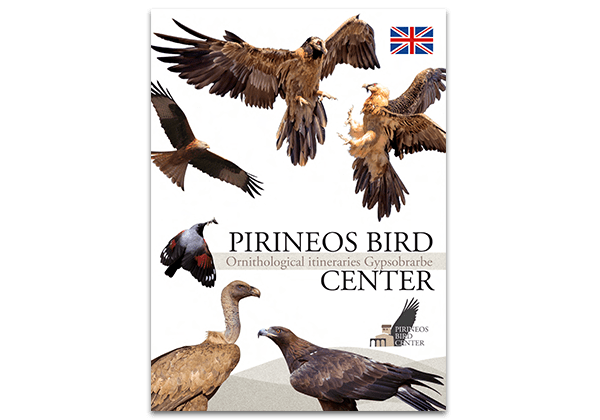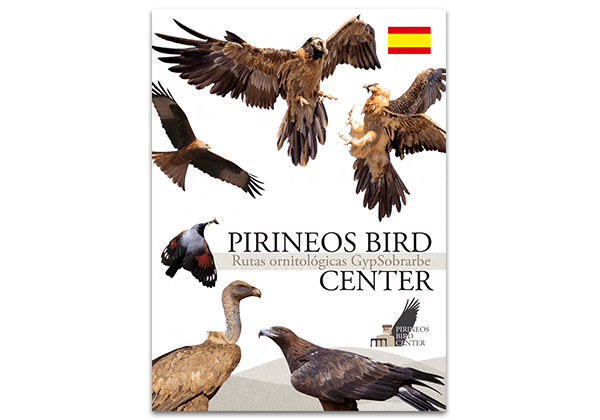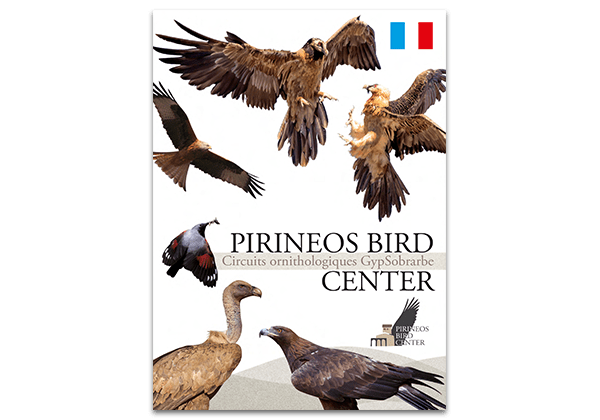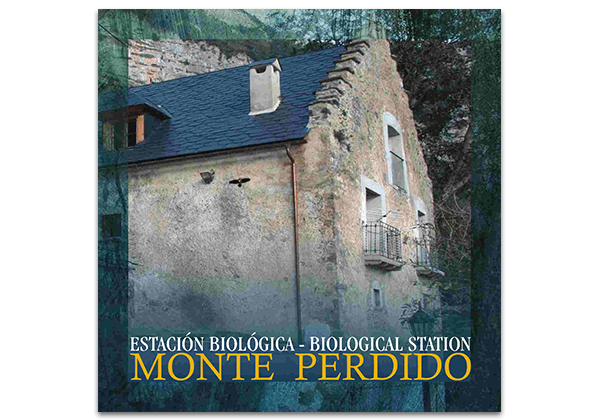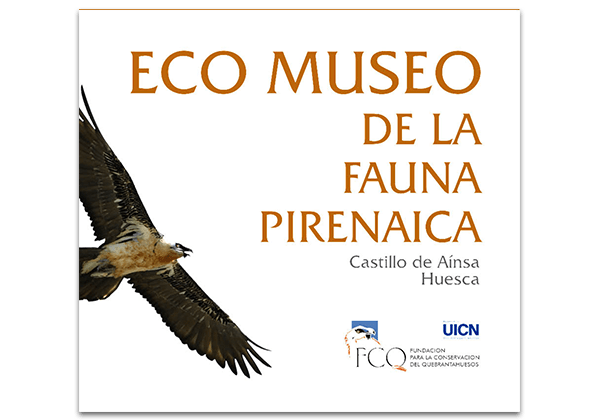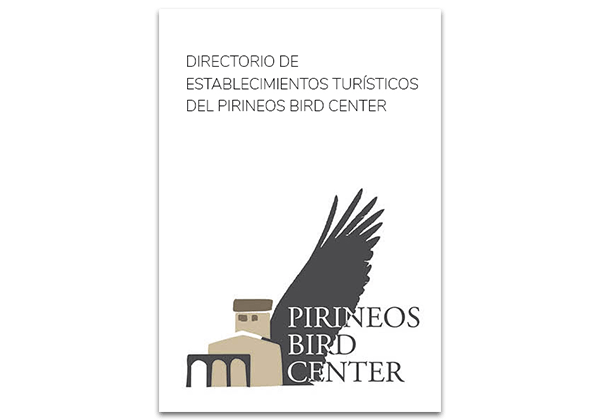What is the PBC?
Situated in the heart of the medieval town of Aínsa, on the access route to the Ordesa and Monte Perdido National Park, the Pyrenean Bird Center provides specialised information on the observation and photography of carrion-eating birds of prey in the Sobrarbe district.
It is located in the Pyrenean Fauna Eco Museum, managed by the Lammergeier Conservation Foundation, which hosts an inspiring exhibition on Pyrenean biodiversity, and is hence an unmissable stop-off point for birdwatchers and nature lovers in the Pyrenees.
Watch and photograph our protagonists
The Sobrarbe district is amongst the best destinations in the world for the observation and photography of scavenger birds. The abundance of these species is due to the presence of extensive livestock farming; specific feeding sites; and a combination of geographic and climatic conditions that are highly favourable to these magnificent creatures.
PBC Observation points and itineraries
1. Feeding site for scavenger birds in Aínsa
2. Trail “Los miradores de Revilla” (the Revilla viewpoints)
3. Trail “El mirador de los rapaces“(the bird of prey viewpoint)
4. Observation point “Gargantas de Escuaín” (Escuaín valley rivers)
5. Observation point “Paso de la Inclusa” (Inclusa pass)
PBC Observation points and itineraries
1. Feeding site for scavenger birds in Aínsa
2. Trail “Los miradores de Revilla” (the Revilla viewpoints)
3. Trail “El mirador de los rapaces“(the bird of prey viewpoint)
4. Observation point “Gargantas de Escuaín” (Escuaín valley rivers)
5. Observation point “Paso de la Inclusa” (Inclusa pass)
PBC Observation points and itineraries
1. Feeding site for scavenger birds in Aínsa
2. Trail “Los miradores de Revilla” (the Revilla viewpoints)
3. Trail “El mirador de los rapaces“(the bird of prey viewpoint)
4. Observation point “Gargantas de Escuaín” (Escuaín valley rivers)
5. Observation point “Paso de la Inclusa” (Inclusa pass)
Feeder of necrophagous birds of Aínsa.
OFFER OF PHOTOGRAPHICAL HIDES
Location and access
Urban nucleus of Aínsa. Park the vehicle in the parking lot next to the Ara River bus stop. Take the uphill path along the Mesón de L’Aínsa hotel in the direction of Murillo de Tou.
Geographical coordinates
42º 24´44.91” N 0º 08´24.57” E
Altitude: 534 mts.
Description of the route
Easy approach on foot 1 kilometer away. When arriving in front of the feeder there is an observation point at 150 meters delimited by a vegetal screen of cypresses and an interpretive poster.
Ornithological values
Specific feeder of carrion birds. After the contributions good acceptance of griffon vultures, very favorable for Egyptian vultures and kites. Two pairs of bearded vultures visit him regularly.
Pathology of the route
It can be visited throughout the year, although it is advisable to check the PBC telephone number for the days and hours of contribution. During winter, migratory species such as the Egyptian vulture or black kite are not present.
Particularities and environmental values
This feeder has an offer of “hides” or photographic hiding places with “spy” crystals, located inside the feeding point, which allows the observation and realization of photographic sessions and filming of the “pitanzas” within 20 meters of emblematic species of the necrophagous avifauna of community interest. For both observation and photography consult the PBC telephone (974 500597). A complementary visit to the Pyrenean Wildlife Museum (headquarters of the PBC) is proposed in the castle of Aínsa, which has among other equipment a sample of live birds of prey that can not be recovered.
Path of the viewpoints of Revilla.
ORNITHOLOGICAL ACCOMMODATION IN THE BEST PLACE IN THE WORLD TO OBSERVE THE BURGLAR
Location and access
From Aínsa on the A-138 road towards France, at Hospital de Tella, turn left towards Tella and then again turn left to Revilla. Starting point on the interpretive sign of the path in a sharp curve of the road 500 meters from the town of Revilla.
Geographical coordinates
Starting point::
42º 35´51.65” N 0º 08´31.62” E
Altitude: 1.207 mts.
Main point of observation:
42º 36´03.022 N 0º07´44.842 E
Altitude: 1.240 mts.
Description of the route
Path that runs along the left margin of the Escuaín gorges through a “hanging strip” that allows you to enjoy magnificent views over the gorge through the viewpoints enabled. The route has a length of 2 kilometers with a positive height difference of 100 meters.
Ornithological values: Specific scavenger bird feeder. After the contributions good acceptance of griffon vultures, very favorable for Egyptian vultures and kites. Two pairs of bearded vultures visit him regularly.
Ornithological values
The unquestionable protagonist of this route is the lammergeier that thanks to the existence of a supplementary feeding point in the valley, has a high density of specimens. Other birds of prey rupicolous present and with observation possibilities are golden eagle, griffon vulture, Egyptian vulture and peregrine falcon.
Pathology of the route
It can be visited throughout the year. In the summer months of July and August the Quebrantahuesos Foundation has a guided tours service (information in the PBC).
Particularities and environmental values
This valley located in the National Park of Ordesa and Monte Perdido has remarkable geological, faunal and botanical attractions of different kinds. In the village of Revilla, the Quebrantahuesos Foundation has the Monte Perdido Biological Station, an environmental shelter for environmental training and nature study (consult the PBC).
Path “the viewpoint of the raptors”.
BIRD DIVERSITY AND TRANQUILITY AT THE FEET OF LA PEÑA MONTAÑESA
Location and access
From Aínsa by local road to Pueyo de Araguas and Torrelisa, park the vehicle in an interpretive area in front of the town of Torrelisa identified with exhibition signs, tables and benches.
Geographical coordinates
42º 27´36.67” N 0º 11´18.59” E
Altitude: 884 mts.
Description of the route
The path runs through the extensive holm oaks of Peña Montañesa in a circular route of 7 kilometers that allows the approach to the rocky and the observation of both rocky and forest birds. There is a simple interpretative brochure of the route that can be obtained in rural tourism accommodation Pueyo de Araguás and the headquarters of the PBC.
Ornithological values
Rupicuous and forest birds of prey, among them bearded vultures, breeding colony of griffon vulture, Egyptian vulture, peregrine falcon, red kite, goshawk, short-toed eagle, booted eagle and honey buzzard.
Pathology of the route
Winter, spring and autumn, in summer can be somewhat hot depending on the weather.
Particularities and environmental values
It is one of the sectors with the greatest wealth of bird species in the Pyrenean area because it has a wide altitudinal gradient and diversity of environments in very little space. (from Mediterranean forests to fir trees and high mountain). The sector offers other trails and routes such as the ascent to the Peña Montañesa or the Ermita de la Espelunga. The nearby monastery of San Victorían offers guided tours at different times of the year.
Observation point Escuaín gorges.
NATIONAL PARK OF ORDESA AND MONTE PERDIDO
Location and access
Location and access: From Ainsa on the A-138 road towards France, at Escalona, turn off at the roundabout towards Puértolas and pass this town towards Escuaín. At about 100 meters before arriving at the village with interpretive signs, park and take on foot the forest track located before reaching it.
Geographical coordinates
Starting point::
42º 35´44.61” N 0º 07´42.46” E
Altitude: 1.227 mts.
Observation point:
42º 36´46.71” N 0º 05´54.81” E
Altitude: 1.521 mts.
Description of the route
Continue along the forest track of La Valle to the place known as the Crown located at the end of it (estimate 1 h and 15 minutes of walking, 4.8 km and 320 meters of positive elevation gain). The route leaves to our right the gorges of Escuaín and the Sierra de las Sucas, intersperses areas of meadows and old cultivated terraces with forests of wild pine until reaching the place known as La Valle, more deforested and open.
Ornithological values
It is one of the first supplementary feeding points specific to the bearded vulture that was made in Aragon. Its isolation and continuity of contributions to the National Park for decades means that it presents a high density of specimens of different age classes, an aspect of great interest for training in recognition of ages. Presence of the rest of necrophagous birds like griffon vulture, royal kites and Egyptian vulture, exceptionally isolated specimens of black vulture. Also other birds and mountain species such as golden eagles, red-billed choughs and piquigualdas and chamois.
Pathology of the route
Throughout the year, there may be access problems due to snow in the winter months, especially from December to March, in which the Park’s nursery adapts the point of supply of food to the accessible places allowed by the access trail.
Particularities and environmental values
This sector is located inside the National Park of Ordesa and Monte Perdido, so it has a special protection regulation. There are clear restrictions indicated with signs so as not to abandon the path in the vicinity of the feeder and not disturb the birds. The indications lead us to a covered wooden observatory that has interpretive information and a system of social participation to provide information regarding the observations made. In the town of Escuaín there is an information point of the Park open from Easter to October.
More information in: www.aragon.es/ordesa
Point of observation Step of the Inclusive.
BIRDS OF MOUNTAIN, TRADITION AND PIRENAIC AUTHENTICITY
Location and access
From Ainsa on the A-138 road towards France, in Salinas turn off on the A 2609 towards the Gistaín valley, crossing the three tunnels of this road in the direction of Plan, just past the third tunnel park the car in widening on the First curve located before crossing the bridge over the Cinqueta river.
Geographical coordinates
42º 33´57.79” N 0º 17´27.39” E
Altitude: 1.042 mts.
Description of the route
Specific scavenger bird feeder supplied by local ranchers with continuous presence of necrophagous birds of prey. Its location in a fluvial canyon with important cuttings makes it a place frequented by different species regardless of the existence of recent food inputs.
Ornithological values
Colony of griffon vultures, usual presence of young and adult bearded vultures, a couple of Egyptian vultures, kites, black kites and ravens. Favorable spot for the observation of other rock-dwelling birds such as the golden eagle, peregrine falcon, royal swift, roquero plane, solitary roquero or treparriscos (the latter outside of breeding seasons).
Pathology of the route
All year round, although in the winter months it is advisable to take warm clothes since the observation point is cold because it is located in a shady valley bottom. There are no fixed days of food contributions, so the visit to this point should not take into account this forecast.
Particularities and environmental values
The passage of the Inclusa opens the door to one of the valleys that still maintain traditional livestock and agricultural activities. Its location between rocky cliffs and different mountain ranges makes it a point of great interest for the observation of lammergeiers of different age classes. Both this point and the whole of the valley is one of the best enclaves for the observation of Pyrenean mountain birds, both rocky, forest and high mountain environments.
Information and reservations
Photographic hides for carrion birds of Ainsa
This feeder has an offer of “hides” or photographic hiding places with “spy” crystals, located inside the feeding point, which allows the observation and realization of photographic sessions and filming of the “pitanzas” within 20 meters of emblematic species of the necrophagous avifauna of community interest such as griffon vultures, bearded vultures, Egyptian vultures, black and white kites and also foxes. It has a drinking fountain for small wild birds (hoopoes, shrikes, calves etc …). Two hides with capacity of 4 and 5 people.
The cost per person is € 50.
Lodging at Monte Perdido Biological Station
Specialized accommodation for ornithologists and naturalists in one of the best places in the world for observation and photography of the bearded vulture and other mountain birds in the Ordesa y Monte Perdido National Park. It is a traditional house of Pyrenean architecture with capacity for groups of up to 26 people: It has an audiovisual room / conference room, library and corner of the ornithologist, wifi, and interpreted paths for the observation of lammergeyer and butterflies through a microreservation. The approximate cost per night and person is € 20.
More information in: www.aragon.es/ordesa
Eco Museum of the Pyrenean Fauna of the castle of Aínsa
Interpretation center on the Pyrenean fauna, the exhibition translated into three languages has three well differentiated parts of the bioclimatic floors, audiovisual on the Pyrenean biodiversity and a zoo park of unrecoverable birds of prey with a guided tour of it. The visit lasts approximately 45 minutes to 1 hour and is priced at € 5 / person. Concerted groups are attended with a discount of 25% for groups of more than 20 people. There are also discounts for youth card holders and people with disabilities. Free admission for children up to and including 4 years old and for FCQ members. Accessibility for the disabled and braille content. It is also the headquarters of the Pyrenees Bird Center with specialized information on the ornithological resource and complementary activities at different times of the year (consult).
Multimedia gallery
Downloads
Code of Ethics for birdwatchers
Respect for the natural world should prevail over any activity carried out in this environment. As nature-lovers we should maintain the highest ethical standards at all times, aiming to serve as an example of integrity and correct behaviour for society as a whole.
- Knowledge reduces negative impact. Birdwatchers should make themselves familiar with the behaviour, biology and requirements of the species.
- We should serve as an example for others, obtain the necessary permits, and be familiar with the regulations governing the area we are visiting.
- Getting too close to birds should be avoided. It disturbs them and causes stress, intimidation and changes in behaviour.
- Special care should be taken at times when birds are more vulnerable, such as the nesting season and during periods of harsh weather.
- Centers that keep animals in captivity are governed by specific regulations that we must be aware of and adhere to. The educative and conservation aims of these centres should prevail over any other purpose.
- If we observe any breach of regulations or questionable behaviour on the part of other birdwatchers then we should report it to the relevant authorities.
- It is important to note the details of any ringed or marked birds we observe and to transmit this information to the PBC. It is very helpful for tracking purposes and for the conservation of the species.
Code of Ethics for birdwatchers
Respect for the natural world should prevail over any activity carried out in this environment. As nature-lovers we should maintain the highest ethical standards at all times, aiming to serve as an example of integrity and correct behaviour for society as a whole.
- Knowledge reduces negative impact. Birdwatchers should make themselves familiar with the behaviour, biology and requirements of the species.
- We should serve as an example for others, obtain the necessary permits, and be familiar with the regulations governing the area we are visiting.
- Getting too close to birds should be avoided. It disturbs them and causes stress, intimidation and changes in behaviour.
- Special care should be taken at times when birds are more vulnerable, such as the nesting season and during periods of harsh weather.
- Centers that keep animals in captivity are governed by specific regulations that we must be aware of and adhere to. The educative and conservation aims of these centres should prevail over any other purpose.
- If we observe any breach of regulations or questionable behaviour on the part of other birdwatchers then we should report it to the relevant authorities.
- It is important to note the details of any ringed or marked birds we observe and to transmit this information to the PBC. It is very helpful for tracking purposes and for the conservation of the species.




